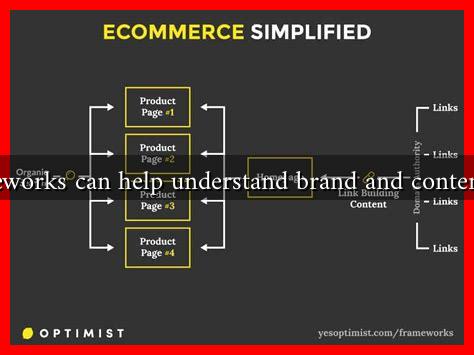-
Table of Contents
What Frameworks Can Help Understand Brand and Content Dynamics
In today’s digital landscape, the relationship between brand and content is more critical than ever. As businesses strive to create meaningful connections with their audiences, understanding the dynamics of brand and content becomes essential. Various frameworks can help marketers and brand strategists navigate this complex terrain. This article explores some of the most effective frameworks that can enhance our understanding of brand and content dynamics.
The Brand Equity Model
The Brand Equity Model, developed by David Aaker, is a foundational framework that helps businesses understand the value of their brand. It emphasizes four key components:
- Brand Loyalty: The degree to which customers are committed to repurchasing a brand.
- Brand Awareness: The extent to which consumers recognize or recall a brand.
- Perceived Quality: The customer’s perception of the overall quality or superiority of a brand.
- Brand Associations: The mental connections consumers make with a brand, including attributes, benefits, and experiences.
By analyzing these components, brands can create content that resonates with their target audience. For instance, Nike’s “Just Do It” campaign effectively leverages brand loyalty and awareness, encouraging consumers to associate the brand with motivation and achievement.
The Content Marketing Framework
The Content Marketing Framework, as outlined by the Content Marketing Institute, provides a structured approach to creating and distributing valuable content. This framework consists of several key elements:
- Strategy: Define your goals, audience, and key messages.
- Creation: Develop high-quality, relevant content that aligns with your brand’s voice.
- Distribution: Choose the right channels to reach your audience effectively.
- Measurement: Analyze performance metrics to assess the impact of your content.
For example, HubSpot utilizes this framework to produce educational content that attracts potential customers, ultimately driving leads and conversions. Their blog, eBooks, and webinars are all designed to provide value while subtly promoting their brand.
The Brand Pyramid
The Brand Pyramid is another useful framework that helps brands articulate their value proposition. It consists of five levels:
- Attributes: The tangible features of a product or service.
- Benefits: The functional and emotional advantages that consumers gain.
- Values: The core principles that guide the brand’s actions.
- Personality: The human traits associated with the brand.
- Essence: The fundamental nature of the brand, often encapsulated in a single phrase.
Brands like Apple exemplify the Brand Pyramid by emphasizing innovation (attributes), user experience (benefits), creativity (values), and a sleek, modern personality. Their brand essence can be summed up as “Think Different,” which resonates deeply with their audience.
The Customer Journey Framework
The Customer Journey Framework maps out the stages a consumer goes through when interacting with a brand. It typically includes:
- Awareness: The consumer becomes aware of the brand.
- Consideration: The consumer evaluates the brand against competitors.
- Decision: The consumer decides to purchase.
- Retention: The consumer continues to engage with the brand post-purchase.
- Advocacy: The consumer becomes a brand advocate, promoting it to others.
Understanding this journey allows brands to create targeted content that addresses consumer needs at each stage. For instance, a travel company might produce blog posts about destinations (awareness), comparison guides (consideration), and customer testimonials (advocacy) to guide potential customers through their journey.
Conclusion
Understanding brand and content dynamics is crucial for businesses aiming to build strong relationships with their audiences. By leveraging frameworks such as the Brand Equity Model, Content Marketing Framework, Brand Pyramid, and Customer Journey Framework, marketers can create more effective strategies that resonate with consumers. These frameworks not only provide clarity but also guide the development of content that aligns with brand values and meets customer needs. As the digital landscape continues to evolve, staying informed about these frameworks will empower brands to adapt and thrive.
For further reading on brand and content dynamics, consider exploring resources from the Content Marketing Institute and David Aaker’s website.

